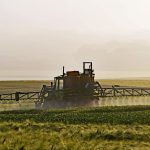Introduction
Permaculture, a term coined from “permanent agriculture,” has evolved into a philosophy and approach centered around sustainable living and ecological harmony. This comprehensive guide delves deep into the principles, design methodologies, and practical applications of permaculture, offering insights for beginners and experienced practitioners alike.
Table of Contents
- Origins and Evolution of Permaculture
- Historical Background
- Founding Principles
- Key Contributors
- Core Principles of Permaculture
- Earth Care
- People Care
- Fair Share
- Design Methodologies
- Observing and Interacting
- Energy Efficiency and Zoning
- Integrated Systems
- Permaculture Techniques and Practices
- Water Management
- Soil Health
- Plant Guilds
- Animal Integration
- Applications of Permaculture
- Home Gardens and Urban Settings
- Community Projects
- Large Scale Agricultural Systems
- Challenges and Solutions in Permaculture
- Common Obstacles
- Innovative Solutions
- Permaculture and the Future
- Climate Change Mitigation
- Educational Initiatives
- Global Impact
- Conclusion
Origins and Evolution of Permaculture
Historical Background
Permaculture originated in the 1970s, developed by Bill Mollison and David Holmgren in Australia. The concept emerged as a response to the destructive practices of industrial agriculture, which were depleting natural resources and ecosystems at an alarming rate. Industrial agriculture relies heavily on chemical inputs, monocultures, and intensive irrigation, leading to soil degradation, water scarcity, and loss of biodiversity. Permaculture was conceived as a holistic alternative, promoting practices that work with nature to create sustainable and regenerative systems.
Founding Principles
Mollison and Holmgren laid down a set of ethical and design principles that serve as the foundation of permaculture. These principles emphasize the importance of working with nature rather than against it, fostering sustainable and regenerative systems. They are built on the understanding that ecosystems are interconnected and that human activities should enhance, rather than disrupt, these natural processes.
Key Contributors
Beyond Mollison and Holmgren, numerous individuals have contributed to the development and dissemination of permaculture practices. Notable figures include Geoff Lawton, known for his work on arid landscapes; Sepp Holzer, who has applied permaculture principles to alpine farming; and Rosemary Morrow, an educator who has spread permaculture teachings globally. Each of these contributors has expanded the scope and application of permaculture, adapting its principles to diverse environments and cultural contexts.
Core Principles of Permaculture
Earth Care
The principle of Earth Care is fundamental to permaculture. It involves protecting natural ecosystems, enhancing biodiversity, and ensuring the health of the soil, water, and air. Practices under this principle include organic farming, reforestation, and habitat restoration. Earth Care emphasizes the need to maintain the Earth’s life-support systems, recognizing that the health of the planet is intrinsically linked to the health of all living beings.
People Care
People Care emphasizes the importance of nurturing individuals and communities. It involves creating supportive social structures, promoting self-reliance, and ensuring access to resources such as clean water, healthy food, and safe shelter. This principle recognizes that social equity and well-being are essential for sustainable development. By fostering strong, resilient communities, permaculture aims to enhance quality of life and reduce social and economic disparities.
Fair Share
Fair Share, or “returning the surplus,” focuses on redistributing resources and surplus to benefit the environment and society. This principle encourages equitable resource sharing, reducing waste, and fostering a culture of cooperation and generosity. Fair Share highlights the need for moderation and mindful consumption, ensuring that resources are used wisely and that the needs of future generations are considered.
Design Methodologies
Observing and Interacting
Effective permaculture design begins with careful observation of the environment. By understanding the natural processes and patterns of a given site, practitioners can design systems that harmonize with the local ecology. This involves studying the climate, soil, water flow, plant and animal life, and human activities in the area. Observation allows designers to identify opportunities and constraints, ensuring that interventions are well-informed and context-specific.
Energy Efficiency and Zoning
Permaculture design incorporates the concept of zoning, where areas are organized based on the frequency of human use and the energy required to maintain them. This approach maximizes efficiency and minimizes waste. Zoning typically includes:
- Zone 0: The home or central living area.
- Zone 1: The area closest to the home, requiring frequent attention (e.g., kitchen gardens).
- Zone 2: Areas for less intensive cultivation (e.g., orchards, larger vegetable gardens).
- Zone 3: Areas for occasional maintenance (e.g., pastures, fields).
- Zone 4: Semi-wild areas for foraging or timber production.
- Zone 5: Wild areas for conservation and minimal human intervention.
Integrated Systems
Permaculture advocates for the integration of various elements within a system, ensuring that each component supports and benefits from the others. This creates resilient and self-sustaining ecosystems. For example, integrating livestock into crop systems can provide natural fertilizer and pest control, while also producing food. By designing systems where elements are interconnected and mutually supportive, permaculture enhances productivity and ecological balance.
Permaculture Techniques and Practices
Water Management
Water is a critical resource in permaculture. Techniques such as rainwater harvesting, swales, ponds, and greywater recycling are employed to manage and conserve water effectively. Rainwater harvesting involves collecting and storing rainwater from roofs or other surfaces for later use. Swales are ditches designed to capture and infiltrate runoff, reducing erosion and increasing soil moisture. Ponds provide habitat for wildlife and can be used for irrigation, aquaculture, and recreation. Greywater recycling involves reusing wastewater from sinks, showers, and washing machines for irrigation, reducing the demand on freshwater resources.
Soil Health
Healthy soil is the foundation of productive permaculture systems. Practices such as composting, mulching, cover cropping, and no-till farming are used to enhance soil fertility and structure. Composting involves the decomposition of organic matter to create nutrient-rich humus. Mulching protects soil from erosion, retains moisture, and suppresses weeds. Cover cropping involves planting specific crops to improve soil health, prevent erosion, and suppress weeds. No-till farming minimizes soil disturbance, preserving soil structure and microbial life.
Plant Guilds
Plant guilds are groups of plants that support each other’s growth and health. By mimicking natural ecosystems, plant guilds create resilient and productive gardens. Common examples include the “Three Sisters” (corn, beans, and squash) and polycultures of fruit trees, shrubs, and herbs. In a plant guild, each species fulfills a specific role, such as providing nitrogen fixation, pest deterrence, or ground cover. This diversity enhances resilience and productivity, reducing the need for external inputs.
Animal Integration
Animals play a vital role in permaculture systems, providing essential services such as pest control, soil fertilization, and food production. Integrating animals into the landscape requires careful planning to ensure their needs are met while benefiting the overall system. For example, chickens can be used to control pests and fertilize soil, while also providing eggs and meat. Bees pollinate crops and produce honey. By considering the natural behaviors and needs of animals, permaculture designs can enhance productivity and ecological balance.
Applications of Permaculture
Home Gardens and Urban Settings
Permaculture principles can be applied to small-scale settings, such as home gardens and urban environments. Techniques like vertical gardening, container planting, and rooftop gardens allow city dwellers to cultivate food and green spaces efficiently. Vertical gardening involves growing plants on vertical surfaces, maximizing space and improving air quality. Container planting allows for flexible gardening in small spaces. Rooftop gardens provide insulation, reduce stormwater runoff, and create green spaces in densely populated areas.
Community Projects
Community-based permaculture projects foster collaboration and shared responsibility. These projects can include community gardens, food forests, and educational initiatives, promoting sustainable living and local food security. Community gardens provide space for residents to grow food, fostering social connections and resilience. Food forests are designed to mimic natural forests, providing diverse yields of fruits, nuts, and herbs. Educational initiatives raise awareness and build skills, empowering communities to adopt sustainable practices.
Large Scale Agricultural Systems
Permaculture principles are also applicable to larger agricultural landscapes. Techniques such as agroforestry, silvopasture, and holistic grazing management are used to create sustainable and productive farms that enhance biodiversity and soil health. Agroforestry integrates trees and shrubs into agricultural systems, providing multiple benefits such as shade, wind protection, and habitat for wildlife. Silvopasture combines trees and livestock grazing, enhancing productivity and ecological health. Holistic grazing management involves rotating livestock to mimic natural grazing patterns, improving soil health and vegetation.
Challenges and Solutions in Permaculture
Common Obstacles
Implementing permaculture practices can present challenges, including social resistance, lack of knowledge, and financial constraints. These obstacles can be overcome through education, community engagement, and innovative financing models. Social resistance may arise from cultural norms or misconceptions about permaculture. Lack of knowledge can be addressed through training and demonstration projects. Financial constraints can be mitigated through grants, crowdfunding, and cooperative ventures.
Innovative Solutions
Solutions to common challenges include developing local permaculture networks, creating demonstration sites, and providing training programs. These initiatives help spread knowledge and inspire more people to adopt permaculture practices. Local permaculture networks facilitate the exchange of ideas, resources, and support. Demonstration sites showcase successful permaculture systems, providing practical examples and inspiration. Training programs build skills and knowledge, empowering individuals and communities to implement permaculture principles.
Permaculture and the Future
Climate Change Mitigation
Permaculture offers powerful tools for mitigating climate change. Practices such as carbon sequestration, reforestation, and regenerative agriculture reduce greenhouse gas emissions and enhance ecosystem resilience. Carbon sequestration involves capturing and storing carbon in soils and vegetation. Reforestation restores degraded landscapes, enhancing biodiversity and carbon storage. Regenerative agriculture builds soil health, increases biodiversity, and sequesters carbon, providing multiple environmental benefits.
Educational Initiatives
Education is key to the future of permaculture. By integrating permaculture principles into school curriculums, university programs, and community workshops, we can equip future generations with the skills and knowledge needed for sustainable living. School curriculums can introduce students to ecological literacy and practical skills. University programs can offer advanced training and research opportunities. Community workshops provide hands-on learning and foster local leadership.
Global Impact
The global permaculture movement continues to grow, with projects and practitioners in every corner of the world. This expansion is fostering a global network of individuals and communities dedicated to creating a more sustainable and equitable world. International conferences, online courses, and social media platforms facilitate the exchange of knowledge and experiences, strengthening the global permaculture community. By collaborating and learning from each other, we can accelerate the transition to sustainable living.
Conclusion
Permaculture represents a holistic and ethical approach to sustainable living. By embracing its principles and practices, we can create resilient systems that enhance the health of our environment, communities, and future generations. Whether applied in a small garden or a large farm, permaculture offers a pathway to a more harmonious and sustainable world. As we face global challenges such as climate change, resource depletion, and social inequality, permaculture provides a hopeful and practical framework for building a better future.












